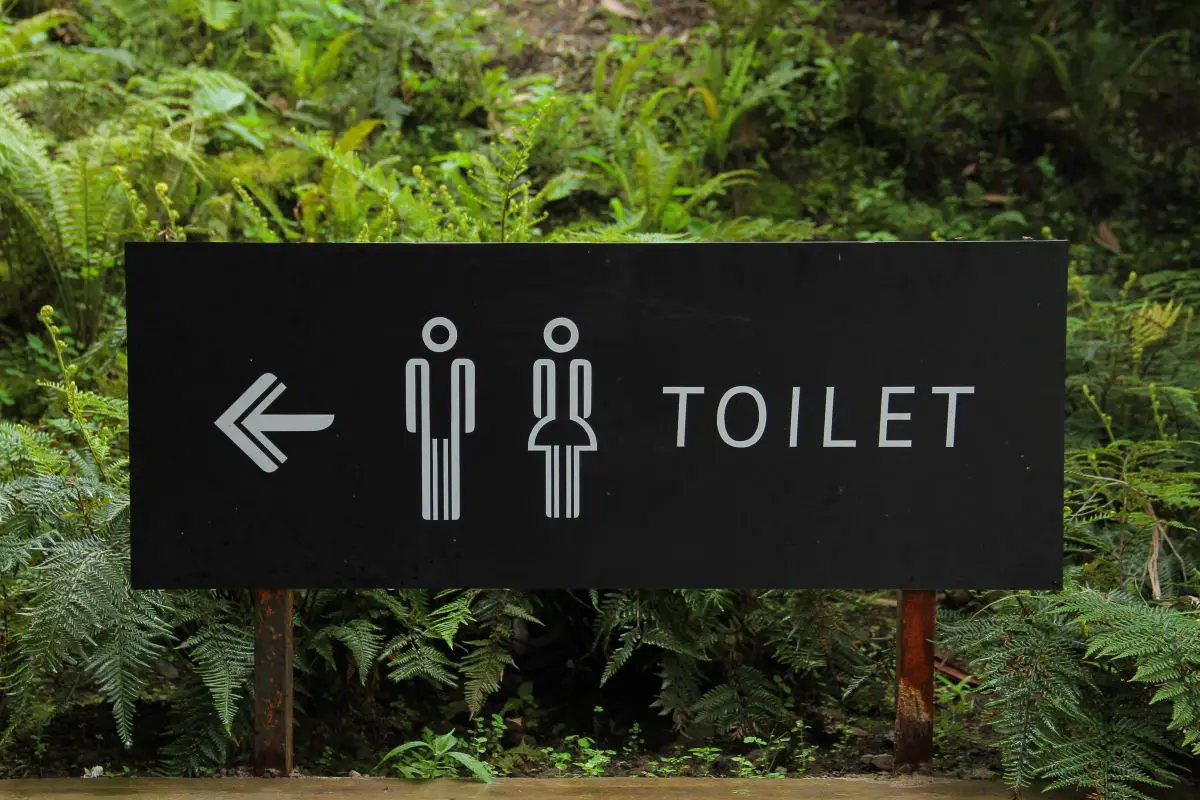8 Potential Reasons for Incontinence In Autistic Adults

The diagnosis of autism often brings with it additional co-occurring conditions, so if you are on the spectrum there’s a good likelihood that you have other conditions as well. While core features like social communications, repetitive behaviors, and sensory processing are often mentioned, another co-occurring condition that can sometimes occur is one that isn’t talked about as often: being incontinent.
I’m not talking about a child who wets the bed or takes longer to toilet train than peers. I’m talking about being an incontinent adult. And it’s more common than you might think.
It’s sometimes considered a “hidden secret” because individuals with the condition are embarrassed or ashamed about a lack of control of their basic body functions. However, it’s important to know that in a majority of cases being incontinent as an adult is uncontrollable, and it’s not your fault. Also, there are many treatment remedies available as well. Acknowledging the problem is the most important first step.
Incontinent Definition and Reasons It Occurs
Before exploring how being incontinent is connected to autism, it’s important to have a clear understanding of what is considered an incontinent definition along with its various forms:
- Urinary incontinence: The involuntary leakage of urine. This can be further categorized into:
- Stress incontinence: Leakage during physical exertion
- Urge incontinence: A sudden, intense urge to urinate followed by involuntary loss of urine
- Overflow incontinence: Frequent or constant dribbling due to incomplete bladder emptying
- Functional incontinence: Physical or cognitive impairments interfering with reaching the toilet in time
- Fecal incontinence: The inability to control bowel movements, resulting in unexpected leakage of stool.
- Enuresis: Involuntary urination, especially at night (nocturnal enuresis or bedwetting). The term is typically only used to describe people old enough to be expected to exercise such control while sleeping.
Prevalence of Being An Autistic Incontinent Adult

- A study published in the Journal of Pediatric Gastroenterology and Nutrition found that 30% of children with autism experienced daytime incontinence, compared to 5% of neurotypical children.
- Research in the Journal of Autism and Developmental Disorders reported that 36% of children with autism aged 7-18 experienced nocturnal enuresis, significantly higher than the general population.
- Fecal incontinence rates are also elevated, with some studies suggesting prevalence as high as 25% in children with autism.
Importantly, these issues often persist longer in individuals with autism. While most neurotypical children achieve bladder and bowel control by age 4-5, many autistic individuals continue to struggle with being incontinent into adolescence and sometimes adulthood.
Autistics have posted about incontinence problems on Reddit, with one incontinent adult reader posting that “despite me being on the ‘high functioning’ end of the spectrum, I still wet the bed up until when I was in college.” Poster @sj29072 indicates, “I have experienced challenges with bladder and bowel incontinence for most of my life. I’m male and 26. I started wearing pull-ups and it’s been one of the best decisions I ever made for myself.”
Others talk of going to the urologist and finding treatment plans or medications that have worked well, so that they can live their best life in spite of incontinent challenges.
8 Potential Reasons for Incontinence in Autism
The higher prevalence of incontinence in autism is likely due to a combination of factors.
Understanding these potential causes is crucial for developing effective management strategies:
- Sensory Processing Differences
Many individuals with autism experience atypical sensory processing. This can affect interoception – the sense of the body’s internal state. Some autistic individuals may have difficulty recognizing or interpreting bodily signals related to bladder or bowel fullness. This delayed or muted awareness can lead to accidents or difficulty timing toileting appropriately. - Executive Functioning Challenges
Executive functions are cognitive processes that help us plan, initiate, and carry out tasks. Many people with autism experience challenges in this area. Toileting involves a complex sequence of steps: recognizing the need, planning to use the bathroom, initiating the process, and executing each step. Difficulties with executive functioning can make this seemingly simple task quite challenging. - Communication Barriers
Autism often involves differences in communication. For individuals with limited verbal skills or those who are non-speaking, expressing the need to use the bathroom can be difficult. Even for those with strong language skills, the social aspects of requesting to use the bathroom (especially in unfamiliar settings) can be challenging. - Gastrointestinal Issues
Research indicates that gastrointestinal (GI) problems are more common in individuals with autism. Issues like chronic constipation, diarrhea, or irregular bowel movements can contribute to fecal incontinence. Additionally, these GI problems can indirectly affect urinary continence by putting pressure on the bladder or altering pelvic floor muscle function. - Motor Skill Differences
Some individuals with autism experience challenges with motor planning and execution. This can affect the physical aspects of toileting, such as manipulating clothing, maintaining balance, or coordinating the muscles involved in bladder and bowel control. - Anxiety and Stress
Many people with autism experience higher levels of anxiety, which can exacerbate issues of being incontinent. The stress of social situations, changes in routine, or sensory overload can trigger urgency or accidents. - Medication Side Effects
Some medications commonly prescribed for co-occurring conditions in autism (such as ADHD or anxiety) can affect bladder function as a side effect. - Developmental Delays
While not all individuals with autism experience developmental delays, those who do may take longer to develop the physical and cognitive skills necessary for independent toileting and overcoming being incontinent.
Impact of Incontinence on Individuals with Autism and Their Families
The effects of incontinence extend far beyond the physical aspects, impacting various areas of life:
- Social Challenges: Incontinence can lead to social isolation, bullying, or exclusion from activities, exacerbating the social difficulties many individuals with autism already face.
- Self-Esteem: Persistent incontinence issues can negatively affect self-esteem and body image, particularly in older children, adolescents, and adults.
- Independence: Difficulties with continence can hinder the development of independence and self-care skills.
- Educational Impact: Incontinence issues can disrupt learning, lead to missed school time, and require additional support in educational settings.
- Family Stress: Managing incontinence can be time-consuming and emotionally draining for caregivers, potentially increasing family stress levels.
- Financial Burden: The costs associated with managing incontinence (specialized clothing, absorbent products, laundry, etc.) can be significant.
- Health Concerns: Chronic incontinence can lead to skin irritation, urinary tract infections, and other health issues if not properly managed.
10 Management Strategies for Addressing Autistic Incontinent Definition
Addressing incontinence in autism requires a comprehensive, individualized approach. Here are some strategies that can be helpful.
- Behavioral Interventions
– Timed Voiding: Establishing a regular toileting schedule can help prevent accidents and build a routine.
– Positive Reinforcement: Using rewards or praise to encourage successful toileting attempts.
– Visual Schedules: Creating visual aids to illustrate the steps of toileting can support individuals with executive functioning challenges. - Environmental Modifications
– Ensuring easy access to bathrooms
– Adapting bathroom environments to address sensory sensitivities (e.g., adjusting lighting, providing familiar toileting equipment)
– Using visual cues to indicate bathroom locations - Addressing Underlying Medical Issues
– Treating constipation or other GI problems
– Managing co-occurring conditions that may contribute to incontinence
– Reviewing medications for potential side effects affecting continence - Occupational Therapy
– Working on sensory integration to improve interoception
– Developing motor skills related to toileting
– Addressing any sensory aversions to bathroom environments or toileting - Communication Supports
– Teaching and reinforcing communication methods for expressing toileting needs
– Providing communication aids (e.g., picture cards) for non-speaking individuals - Specialized Products
– Using absorbent undergarments or clothing designed for incontinence
– Employing bedwetting alarms for nocturnal enuresis - Dietary Considerations
– Managing fluid intake, especially before bedtime
– Identifying and avoiding dietary triggers that may exacerbate GI issues - Physical Therapy
– Pelvic floor exercises to improve muscle control
– Techniques to improve bladder and bowel awareness - Cognitive Behavioral Therapy (CBT)
– For older individuals, CBT techniques can help manage anxiety related to toileting and develop coping strategies - Medication
– In some cases, under medical supervision, medications may be prescribed to address specific types of lack of control
The Importance of a Patient-Centered Approach for Incontinent Definition
It’s crucial to remember that every individual with autism is unique. What works for one person may not be effective for another. A patient-centered approach, considering the individual’s specific needs, challenges, and strengths, is essential for successful management of continence.
In addition, it’s important to approach this issue with sensitivity and respect for the individual’s dignity. Incontinence can be a source of embarrassment or frustration, and efforts to address it should always prioritize the person’s emotional well-being.
Healthcare providers play a critical role in addressing the health needs of an autistic incontinent adult. This includes:
- Primary care physicians who can screen for and initially assess incontinence issues
- Urologists and gastroenterologists who can diagnose and treat underlying medical causes
- Specialists and psychiatrists who can address behavioral aspects and manage medications
- Occupational therapists and physical therapists who can work on relevant skills and strategies
Ideally, these professionals should work together as part of a coordinated care team, considering the whole person and not just the incontinence in isolation.
Societal Impact and Awareness of Being Incontinent As An Autistic Adult
The intersection of autism and incontinence has broader societal implications that are worth exploring:
Public Understanding: There’s a general lack of awareness about the prevalence of incontinence in autism. This can lead to misunderstandings and stigma, particularly in public settings.
Accessibility Issues: Many public spaces aren’t adequately equipped to support individuals with both autism and incontinence. This can limit participation in community activities, employment opportunities, and social events.
Educational Challenges: Schools and universities may struggle to provide appropriate support for students with autism who experience incontinence, potentially impacting educational outcomes and social integration.
Workplace Considerations: As more adults with autism enter the workforce, accommodations for incontinence management may become an important aspect of workplace inclusivity.
Technology and Innovation for Managing Toileting Control

Smart Diapers: Wearable sensors that can alert caregivers when a diaper needs changing, potentially reducing skin irritation and improving hygiene.
Virtual Reality Training: VR applications that allow individuals to practice toileting routines in a safe, controlled environment.
AI-Powered Prediction: Machine learning algorithms that can predict toileting needs based on individual patterns, supporting more effective timed voiding strategies.
Adaptive Clothing: Innovative clothing designs that are both discreet and easy to manage for individuals with motor skill challenges.
Lifespan Changes
It’s also crucial to consider incontinence management across the lifespan of individuals with autism:
Early Intervention: The potential benefits of addressing incontinence early in childhood development.
Adolescence: Managing the increased social and emotional impact of toileting control during the teen years.
Transition to Adulthood: Strategies for promoting independence in incontinence management as individuals move into adult roles.
Aging: Considering how age-related changes might interact with autism-related incontinence, and planning for long-term care needs.
Psychological Aspects
The psychological impact of incontinence in autism deserves deeper exploration:
Body Image: How persistent incontinence might affect the development of body image and self-concept in individuals with autism.
Trauma: For some individuals, negative experiences related to incontinence (such as bullying or harsh toileting practices) may result in trauma that requires sensitive, trauma-informed care.
Motivation: Understanding and leveraging individual motivations can be key to successful continence training, especially given the unique interests often present in autism.
Cognitive Theories: Exploring how theories of autism, such as weak central coherence or theory of mind differences, might relate to continence challenges.
Integrative Approaches to Understanding Reasons for Incontinence and How To Manage It
Moving forward, a more integrative approach to managing toileting in autism may yield better outcomes:
Mind-Body Techniques: Exploring how mindfulness, biofeedback, or yoga might support better bodily awareness and control.
Nutritional Approaches: Investigating how dietary interventions might impact both GI function and overall continence.
Complementary Therapies: Considering the potential role of approaches like acupuncture or herbal medicine, while ensuring they’re evidence-based and safely integrated with conventional treatments.
Holistic Assessment: Developing comprehensive assessment tools that consider the interplay of medical, behavioral, sensory, and environmental factors in autism-related incontinence.

Ultimately, addressing toileting control in autism is not just about managing a medical condition; it’s about enhancing the quality of life, promoting dignity, and supporting fuller participation in society for individuals on the autism spectrum.
It’s crucial to approach this challenge with patience, understanding, and respect for the individual’s dignity. With the right support and interventions, many individuals with autism can make significant progress in managing incontinence, leading to greater independence and well-being.
Additional Challenges Individuals with Autism Face
Learn more about other issues that autistics face:
- Being Real Without Offending Others is an Autistic Challenge
- Autism and Organization: The Secret to Finding Calm in the Chaos
- Helpful Self-Regulation Tips for Keeping Calm and Carrying On
- New Research Reveals Autism Mental Health Linked to These Disorders
- Is Autism a Disability? Surprising Reasons for the Debate
- Social Justice Issues: Why Disability Rights Matter for Autistics
- Break Free: 10 Tips to Take A Risk and Escape Your Comfort Zone
- Autism and Holidays: Why Special Occasions Can Be Challenging
- 6 Fascinating Facts About Autism You Probably Didn’t Know
- 8 Popular Ways to Manage and Master Autistic Social Awkwardness
- Autism and Poor Hygiene: The Smelly Truth to Overcome
- Breaking Down Barriers that Challenge Autism and Friendships
- Anxiety and Autism: 5 Powerful Strategies to Conquer Emotions
- 6 Ways to Tackle Autism Fireworks Anxiety and Sensory Overload
- Autism Clothing for Sensitive Skin Can Enhance Quality of Life
- Autism After High School: Is College the Next Step?
- Extreme Weather and Its Alarming Impact on Autism Emotion

